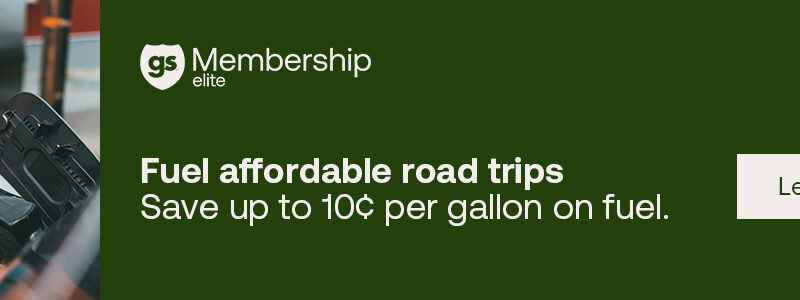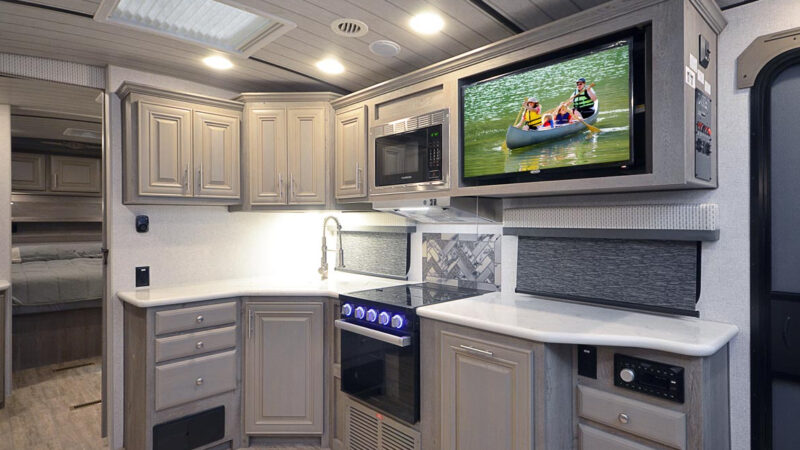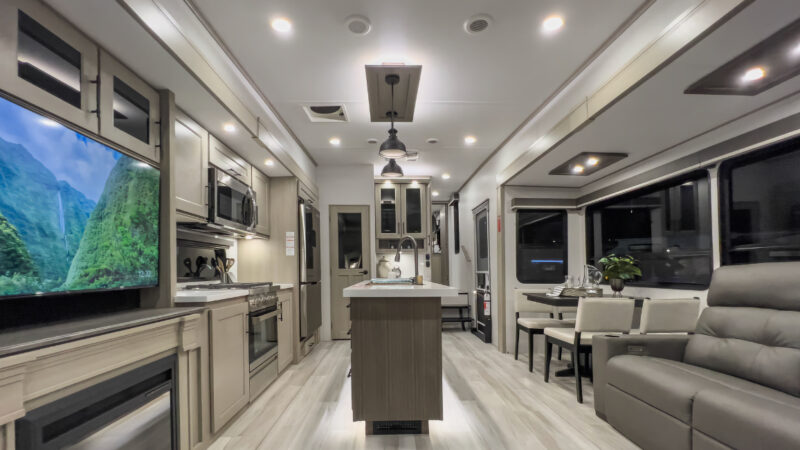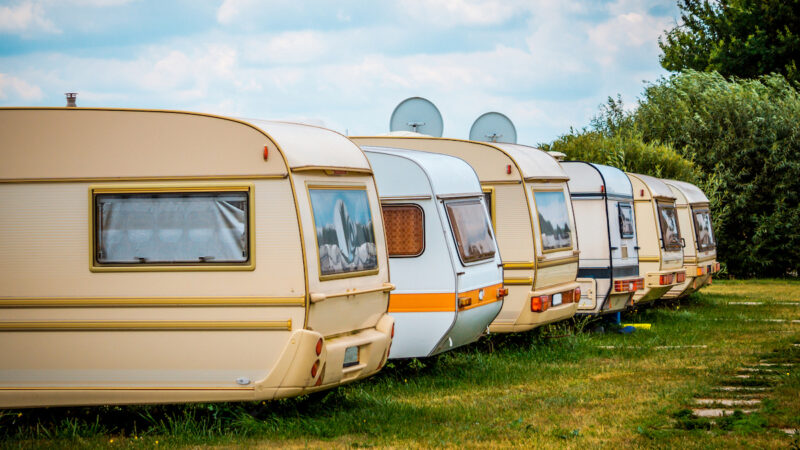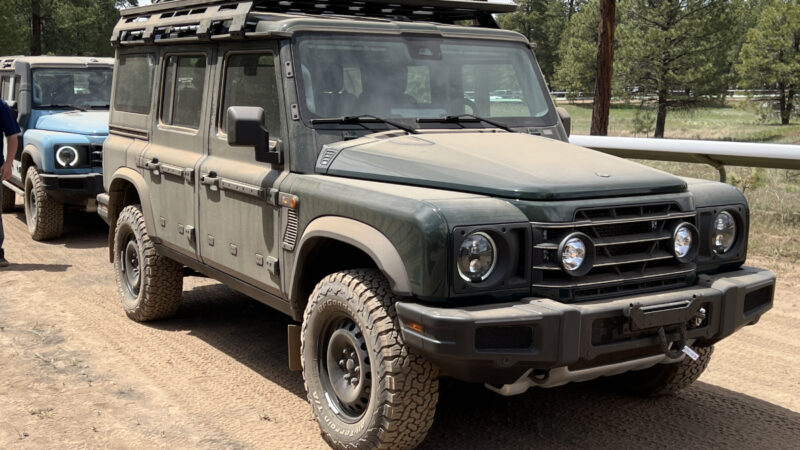Rigs + Gear: Cooking with Gas
I’m usually fearless when it comes to RV modifications, repairs, and maintenance. But the one RV system that always gets me to slow down and pay close attention is the propane system. That’s because the consequences of a propane problem or an improper repair can be pretty severe.
Even if you never foresee yourself taking a wrench to your RV’s propane system (and I wouldn’t blame you), there are a few propane basics every RVer should know and a couple of routine tasks and checks that we should all be doing periodically to keep our RV’s propane systems running properly.
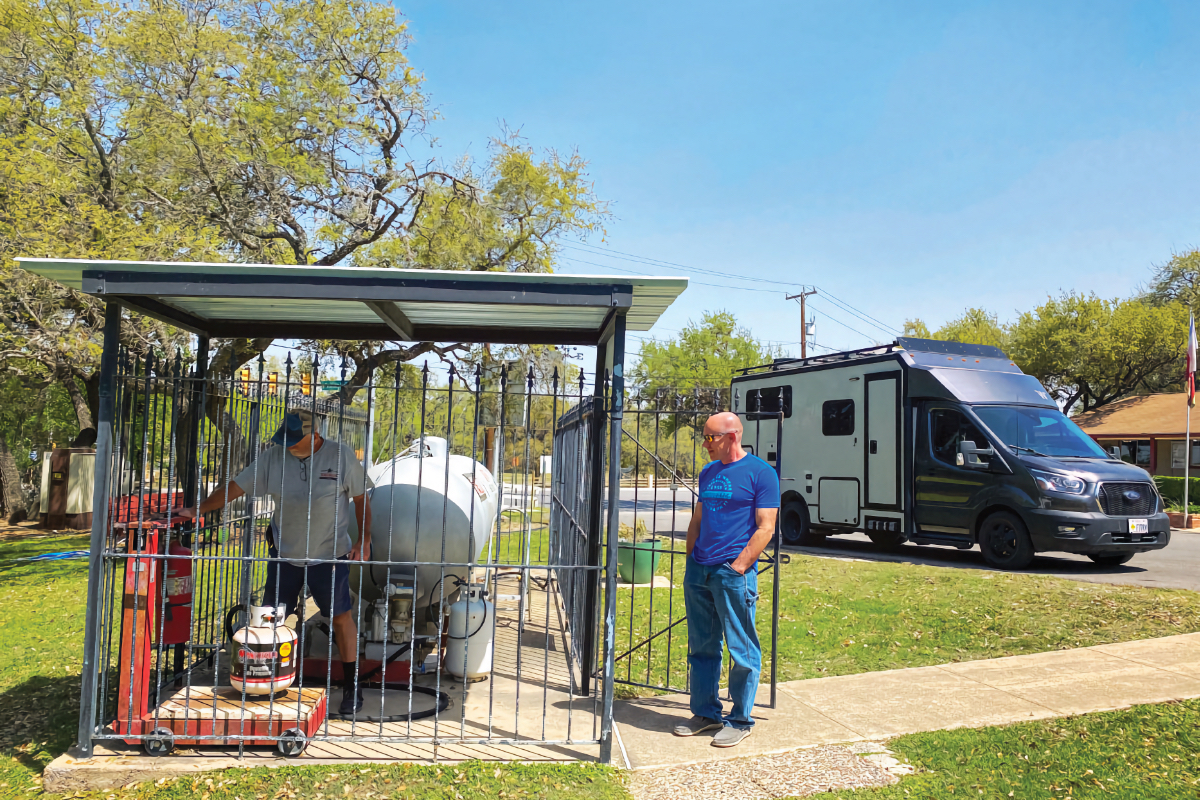
Photo Credit: James Adinaro
Some Propane Basics
First, a few facts about propane (also known as LP-gas). The propane we use in our RVs is sold and stored as a liquid (that’s where the “L” in LP comes from). It’s only a liquid in storage because the tanks are under pressure. Since it’s a liquid, it’s sold by the gallon, and that’s how you’ll pay when filling up.
But propane tanks, particularly smaller ones, are described by weight, not volume. A typical barbecue tank is a 20-pound tank, which means it holds 20 pounds of propane when it’s full. A gallon of propane weighs about 4.2 pounds. This means that a typical 20-pound propane tank should hold about 4.7 gallons when full.
Now, to keep things confusing, propane expands and contracts as the temperature goes up and down. It’s enough that you’d notice—if you could see through the tank. As a safety measure, propane tanks are generally only filled to 80% to allow room for this expansion. But that 80% is already accounted for in the size of the tank, so a 20-pound tank should still hold 20 pounds of propane, not 16.
Removable propane tanks should have their “tare weight” stamped on the collar, labeled “TW,” or something similar. This is the weight of the completely empty tank, and you can add it to the tank’s capacity to know what the tank should weigh when full. So, for example, a 20-pound propane tank with a tare weight of 18 pounds should weigh 38 pounds when full.
One last nerdy fact about propane, and then we’ll move on. A gallon of propane contains about 91,500 British thermal units (BTU) of energy. Knowing this can help you judge how long you can run an appliance on a tank of propane. For example, if your RV’s heater is a 30,000-BTU/hour heater, you could expect to run it for about three hours (91,500 divided by 30,000) on a gallon of propane.
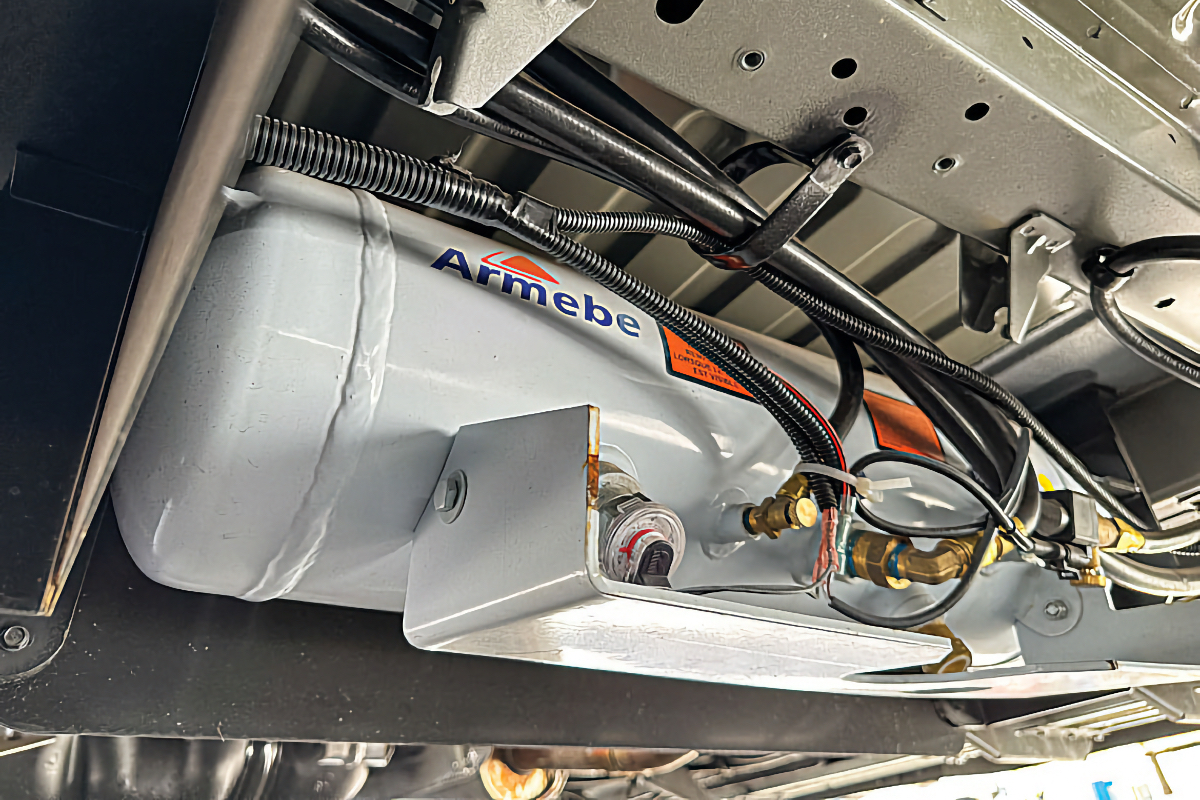
Photo Credit: James Adinaro
Your RV’s Propane System
The propane tank in your RV will either be a permanently mounted tank or a removable tank (often referred to as a cylinder). Generally, motorhomes are more likely to have a permanently mounted tank, and while these tanks can be larger, it also means you’ll have to take the entire motorhome to a filling station to get propane. RVs with removable tanks may have either one or two tanks.
Though the propane in the tank is a liquid, your RV uses propane as a gas. The transition from liquid to gas happens inside the tank, so everything after the tank will manage propane as a gas. If your RV has removable tanks, the first component after the tank will be a pigtail connector to attach and detach it easily. These pigtail connections should have an excess flow prevention device built into them (we’ll come back to this later).
The pigtails connect to a propane regulator. (In a motorhome with a built-in tank, the regulator is connected to the tank without a pigtail.) The regulator is the device that takes the high-pressure propane from a propane tank and reduces it to a lower, steady pressure that propane appliances can use.
Regulators can be either single-stage or two-stage, and that simply refers to the number of steps they take to bring the propane pressure down to the level the appliances need. Generally speaking, your RV’s regulator will be a two-stage regulator, with single-stage regulators used mainly on things like grills and firepits.
After the regulator, the propane will flow into the RV’s propane plumbing system. This might be through a supply hose (for removable tanks) or through piping. And from there, the propane vapor is routed to various appliances.
A final—and very important— part of an RV’s propane system is the propane leak detector. Any RV that uses propane should have one, and it should be in working order. These are generally located near the floor because propane vapor is heavier than air and will pool near the floor.

Photo Credit: James Adinaro
Propane Appliances
Depending on the RV, there may be one or more of the following appliances running on the propane system. Each of these devices will have a supply line that connects to the RV’s propane plumbing. Each of these will also have vents to the outside for combustion air and exhaust.
Heater: RV comfort heaters for cold-weather camping are typically propane-powered. They are sized to match the RV they’re heating. Larger RVs may have more than one.
Water Heater: RV water heaters are generally propane-powered, though many of them have an electric option as well.
Refrigerator: Absorption (RV) refrigerators run on propane, and they won’t use very much propane to keep running, which is why they’ve been a popular choice for camping without hookups. Most absorption refrigerators also have the option to be powered by 12-volt battery power, 120-volt campground power, or both, when those are available. These refrigerators need to be kept close to level to work properly.
External Appliances: Many RVs now come with propane quick-connect ports. These are a convenient way to connect the propane appliances you might bring along (grills, griddles, firepits, etc.) to your RV’s propane system and eliminate the need to bring along additional tanks of propane.
You’ll need to find adapters or appropriate models of grills and accessories to use with these quick connects though. The main issue you’ll encounter is that many propane appliances come with their own regulators—but your RV is already equipped with a regulator before the quick connect. You can’t run propane through two regulators and get enough gas flow for the appliances to work properly, so you’ll need to find appliances that are designed to work without needing their own regulator.

Photo Credit: James Adinaro
Routine Maintenance
The maintenance required on a propane system is minimal, and most RVers should be able to handle it. The first thing you’ll want to do is to periodically inspect and clean out propane-powered appliances. You won’t be adjusting burner orifices or anything like that; you just want to clean out any accumulated debris and look for anything that seems out of place.
Propane has an odorant that smells much like garlic added to it that humans don’t much like—but insects seem to love the smell of burned propane exhaust. So be on the lookout for spiders in the water heater or wasps in the refrigerator—that kind of thing. Gently remove them and any other debris when you find it. Compressed air or a soft brush works well for this.
While you’re checking things out, be sure to check the integrity of the propane hoses (the pigtails and supply hoses) in the system. Have any cracked or damaged hoses replaced. Also, check the dates on the tank(s), as they will need to be recertified or replaced after 12 years.
Another very important maintenance check is to test the propane leak detector and carbon monoxide detector regularly. Remember to replace any batteries on schedule as you would with any safety device. It’s important to know that these detectors have a limited life span. Propane leak detectors and carbon monoxide detectors usually last about seven years. After that, simply replace them.
The final periodic maintenance task is one you likely can’t perform yourself. Be sure to take your RV to a service center at least once a year for a propane leak-down test. This test, using specialized equipment, will detect even small leaks in a propane system. This is one test even I go to a service center for because doing it myself would feel a bit like packing my own parachute.
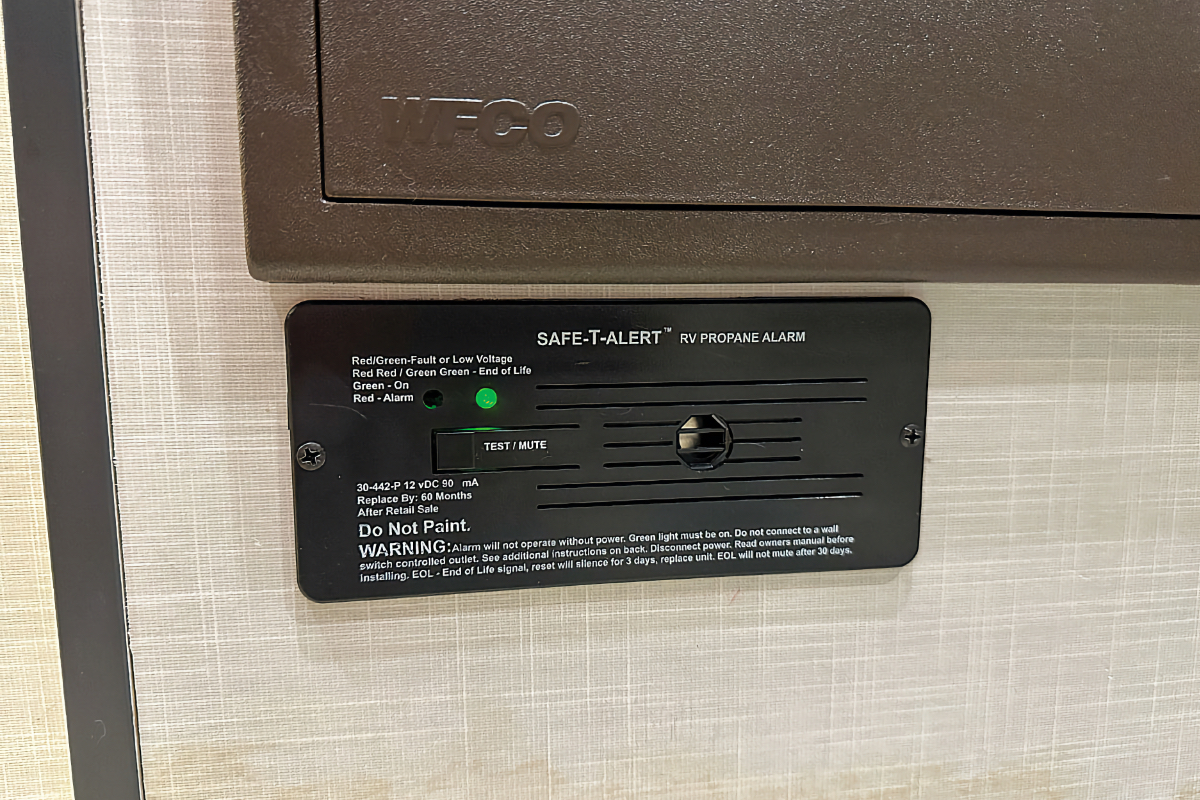
Photo Credit: James Adinaro
Tips + Tricks
Finally, there are a couple of other tips and tricks that are good to know how to do, just in case. The first of these is knowing how to bleed the lines.
If you shut down an RV’s propane system and leave it that way for a while, the propane in the lines will migrate out, leaving air in its place. When you start the system back up again, that air will be in the propane lines and can cause misfires and false starts in appliances.
The easiest way to get this air out of propane lines is to go to a propane cooktop and hold a burning lighter near one of the burners as you slowly turn on the gas. You’ll see the flame on the lighter get blown about a bit as the air is pushed out of the line, and then it should burn steadily as propane is delivered. Let the burner run until a steady blue flame is achieved—this means you’ve gotten the air out of the line. After this, propane appliances should start up easily on the first or second attempt.
Another good trick to know is how to reset a propane lockout. If you find yourself thinking that the propane system is “locked up” or that there’s no flow coming out of one tank, then a likely culprit is the excess-flow-prevention device in the propane pigtails. These are designed to shut off the flow of propane in the event of a severed propane line, but sometimes, they can be tripped unintentionally.
To reset one, first, shut off all propane appliances in the RV. Then, shut off the supply of propane at the tank, and wait a few minutes for the pressure to drop. When you do this, you may hear a small “click” coming from the pigtail. At that point, the excess flow-prevention device is reset. You can then restart the system by opening the valve at the tank—slowly—and then turning on the propane appliances one by one.
Understanding what propane is and performing maintenance tasks as necessary will have you cooking with gas in no time.
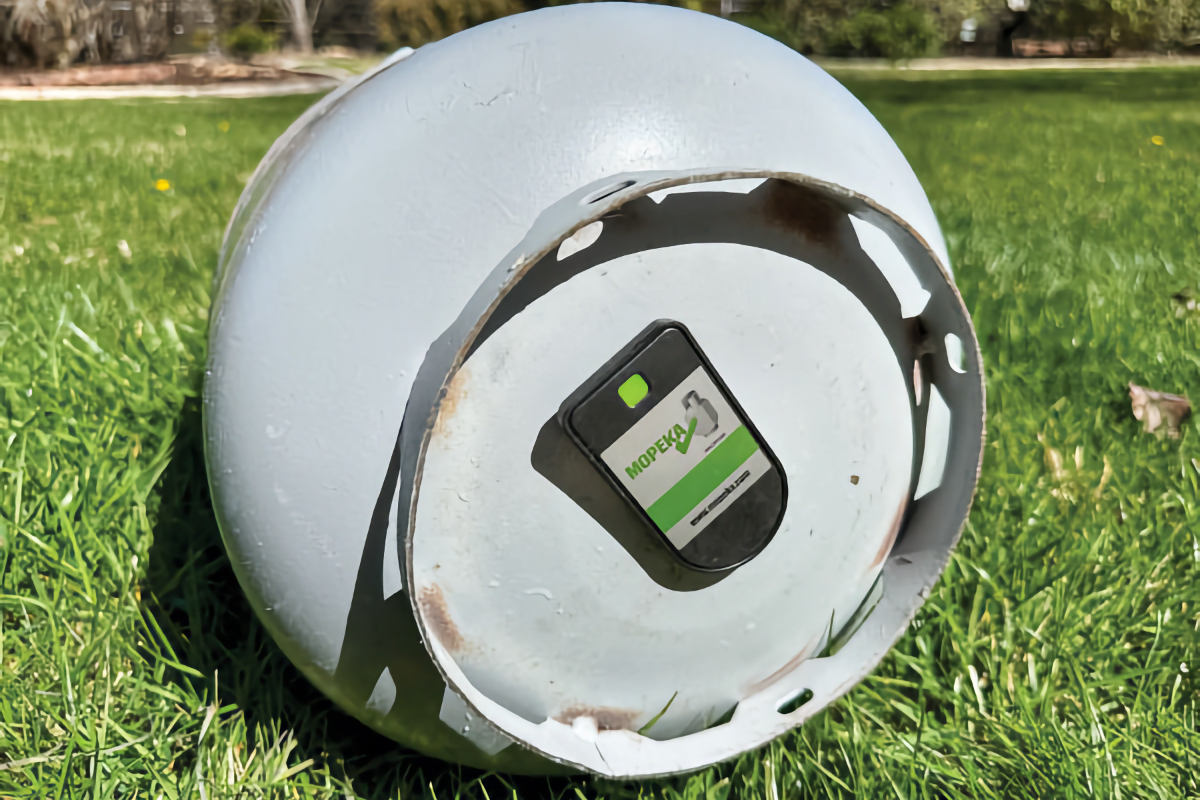
Photo Credit: James Adinaro
How Much is in the Tank?
For RVs with built-in tanks, there will usually be a gauge attached to the tank, with a dial to read the tank level. That gauge may also be wired into the RV’s control panel so that it can be monitored remotely in a way similar to the black and gray tanks.
If the tank doesn’t have a gauge built in, there are several options available. The most foolproof is something your grandfather might have shown you: Simply pour hot water down the side of the tank (about a quart should do it), and then run your hand down the tank. Where the tank changes from feeling warm to feeling cold is where the level of the propane in the tank is. If getting wet isn’t your thing, there are other devices, like the Truma LevelCheck, that you can run down the side of the tank to get a reading on the level in a similar manner.
If you’d like a little more refinement to the process, and the cylinder is removable, you could purchase one of the add-on propane gauges available. These simply screw in between the tank valve and the existing pigtail connection and provide a basic readout of the remaining propane.
Finally, there’s the device I use, the Mopeka Pro Check Sensor. These are small sensors that attach to the bottom of the propane tanks via magnets. They read the tank level by sonar and can report the results back to a smartphone app. We’ve had these for a couple of years now, and they work great. But mostly, I’m impressed that we’ve managed not to lose either of them along the way.

Photo Credit: Antoniestock/Getty
Up in the Night
Murphy’s Law states that at 3 AM. in a snowy ski area parking lot, with temperatures in the negative single digits, will be the time when you learn that a gassy pet can set off your RV’s propane leak detector. At least, that’s how it worked out for us. We laugh about it now, but in that moment, “Everybody out of the RV, NOW!” wasn’t exactly appreciated.
But you should never ignore your RV’s propane leak detector. (And they’re quite loud, so I doubt you could.) Since that time, we travel with not one but two portable gas leak detectors. They’re inexpensive and battery-powered, and I’ve tested them at home to be sure I can rely on them. They do need to be calibrated with fresh air when you turn them on, though, so someone (me…sigh) still has to go outside.
Having these around provides us with the peace of mind we need to get back to sleep without having dreams of action-movie explosions. If you do decide to travel with something like these, make sure to learn to use them and test them before hitting the road.
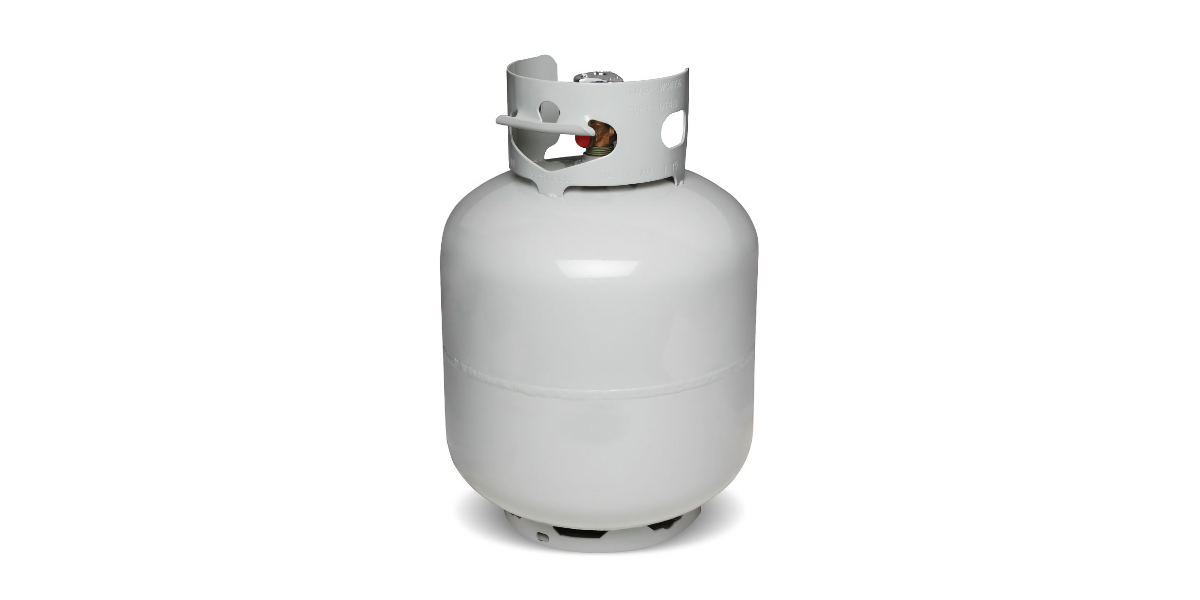
Photo Credit: GlobalP/Getty
Fill or Exchange?
If your RV’s propane system uses the standard 20-pound tanks, you can refill them at a propane supplier or exchange them at one of the automated kiosks found at many retailers. Can’t decide which is for you? The following may help.
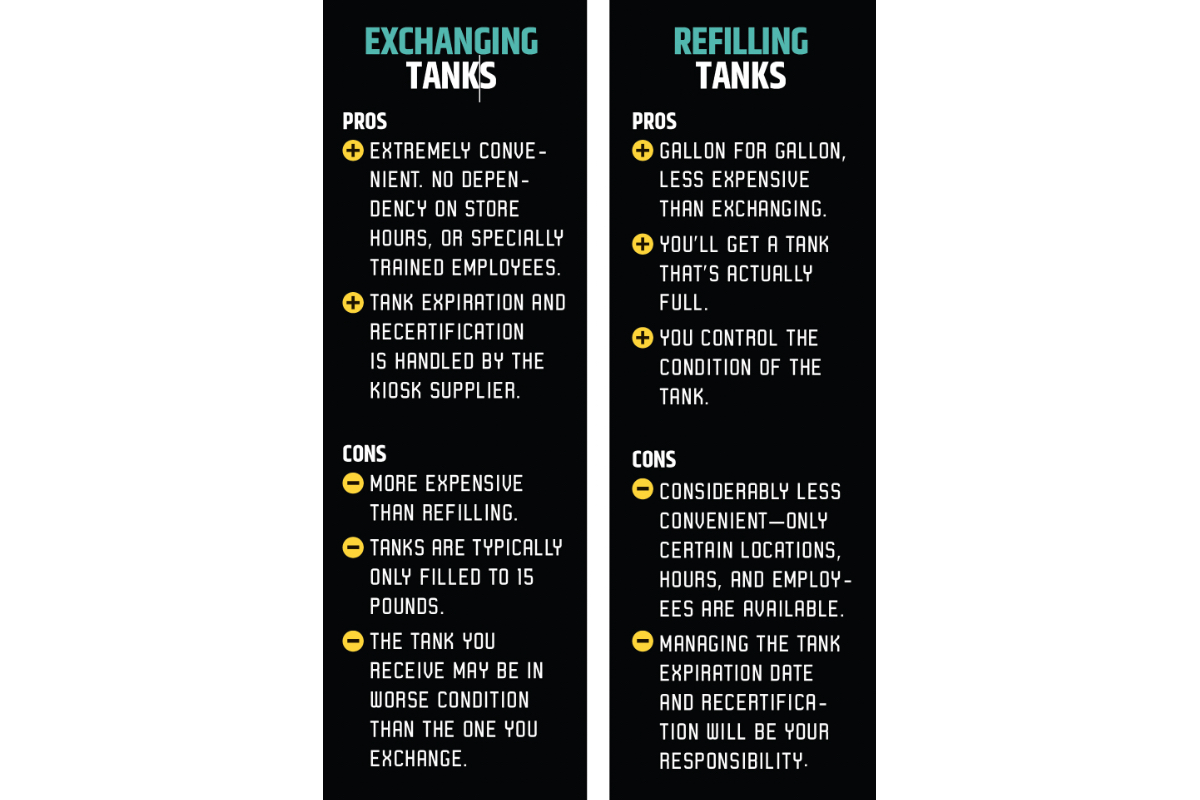
The post Rigs + Gear: Cooking with Gas appeared first on RV.com.
Source: https://www.rv.com/servicing-care/rigs-gear-cooking-with-gas/


